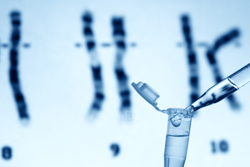An early warning system for cancer
Effective treatment of cancer can depend on early, accurate diagnosis. One of the ways to help achieve this is to know the likelihood of developing the disease in advance. Although predisposition through family history is an indicator, the use of biomarkers gives doctors and patient a head start by using the most appropriate therapy. Changes in the structure of chromosomes can be easily identified in laboratories with appropriate staining and microscope work. So-called chromosomal aberrations (CAs) can therefore act as biomarkers. These CAs - even though all material may be present – can cause genetic chaos in the individual with the development of cancer a possible outcome. It seems that genes must be present not only in the right quantity but in the correct place. With funding from the EU, project scientists with Cancerriskbiomarkers set out to ascertain whether CAs reflect individual susceptibility factors. It would then follow that there is a link with the risk of developing cancer. Also monitored were so-called micronuclei (MN) that form as a result of small bits of chromosomes being left outside of the nucleus. Cell material was analysed from people living in five European countries. The scientists looked at lymphocytes, a type of white blood cell circulating in the blood for evidence of CAs and micronuclei. Associations with external factors such as age and smoking were recorded. Also monitored were levels of enzymes that can come into play in the event of damage. Cells have an arsenal of enzymes that help to repair DNA. Extra cell protection comes from special enzymes that break down cytotoxic chemicals such as antibiotics. The search for external factors that affect chromosome structure revealed some important links. Presence of damage repair enzymes affected numbers of CAs and micronuclei in many cases. Perhaps as expected, smoking and age were also associated with certain types of CA as well as micronuclei. Overall, both the chromosomal and external environment present a very complex set of options for damage and change to the cell's genetic code throughout a person's life. Although data from this extensive research suggests that changes at the chromosome level could be used as a measure for predisposition to cancer, it is clear that much more information must be collected. Eleven countries across Europe were represented by partners of this project. European funding has provided the opportunity to collect information for the beginnings of an extensive database. For the future, this will be one more weapon for the battle against cancer.







